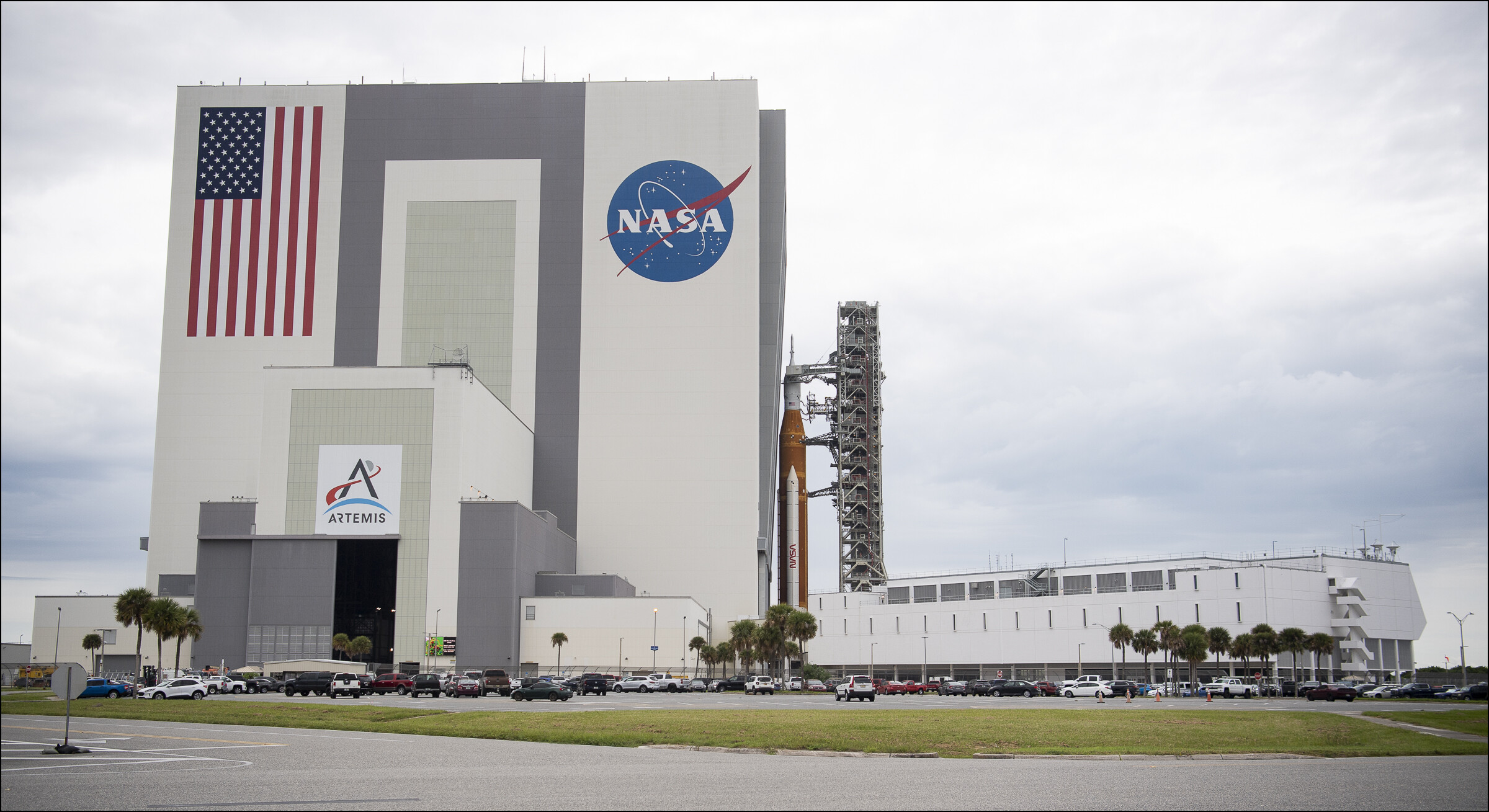(Update: Fire at VAB) NASA's Artemis I Moon rocket and spacecraft return from launch pad

NASA's Artemis I Moon rocket, the Space Launch System (SLS), and the Orion spacecraft have arrived at the Vehicle Assembly Building (VAB) at the agency's Kennedy Space Center after a four-mile journey from Launch Pad 39B. The agency scrapped the September 27 launch attempt of the mega moon rocket due to an approaching tropical storm.
The decision to rollback was made based on the latest weather predictions associated with Hurricane Ian. The Moon rocket and spacecraft started their return trip at 11:21 p.m. Monday, September 26, and were secured inside the VAB at approximately 9:15 a.m. EDT.
"After the storm has passed, teams will conduct inspections to determine impacts at the center and establish a forward plan for the next launch attempt, including replacing the core stage flight termination system batteries and retesting the system to ensure it can terminate the flight if necessary for public safety in the event of an emergency during launch," NASA said in a statement.
The agency will be hosting a media teleconference at 2 p.m. EDT Tuesday, September 27, to discuss the decision to roll Artemis I back to the Vehicle Assembly Building.
Ahead of Hurricane Ian, our #Artemis I Moon rocket and spacecraft were rolled back from the pad and secured inside @NASAKennedy's Vehicle Assembly Building. In a teleconference at 2pm ET (18:00 UTC), NASA leadership will discuss the decision to roll back: https://t.co/rn7zVQfhOi https://t.co/a5qd21vM6S
— NASA (@NASA) September 27, 2022
For the unversed, Artemis I flight test is the first integrated test of NASA's deep space exploration systems: the Orion spacecraft, SLS rocket, and supporting ground systems. The mission is the first in a series of increasingly complex missions to the Moon.
With Artemis missions, the agency aims to land the first woman and first person of color on the Moon, using innovative technologies to explore more of the lunar surface than ever before.
Update 1
A fire was reported in the Vehicle Assembly Building at around 11:45 pm. Luckily, the Artemis I vehicle was not at risk, according to a tweet by NASA.
At approximately 11:45pm today, a fire was reported in the Vehicle Assembly Building. Employees were evacuated, and there are no reported injuries. The VAB is fire safe, and the Artemis I vehicle was not at risk. We will provide updates as we have them.
— NASA's Kennedy Space Center (@NASAKennedy) September 27, 2022
- READ MORE ON:
- NASA Artemis I Moon mission
- Artemis I
- NASA Moon rocket rollback










